Introduction to Rustic Stone Kitchen Backsplash
Rustic stone kitchen backsplashes have become a staple in modern kitchen design, offering a unique blend of natural beauty, durability, and timeless appeal. These backsplashes are crafted from various types of stone, each bringing its texture, color, and character to the kitchen space. From granite and marble to slate and limestone, the choices are abundant and can suit a variety of design aesthetics. The rustic charm of stone backsplashes makes them a popular choice for homeowners looking to add a touch of nature to their kitchens.
One of the main appeals of rustic stone backsplashes is their ability to create a warm and inviting atmosphere. Unlike the sleek, often sterile look of contemporary designs, rustic stone introduces an element of the outdoors, grounding the space and making it feel more homely. The irregularities in stone, such as natural veining and color variations, add a unique character that cannot be replicated by synthetic materials. This authenticity is highly valued in rustic and farmhouse-style kitchens.
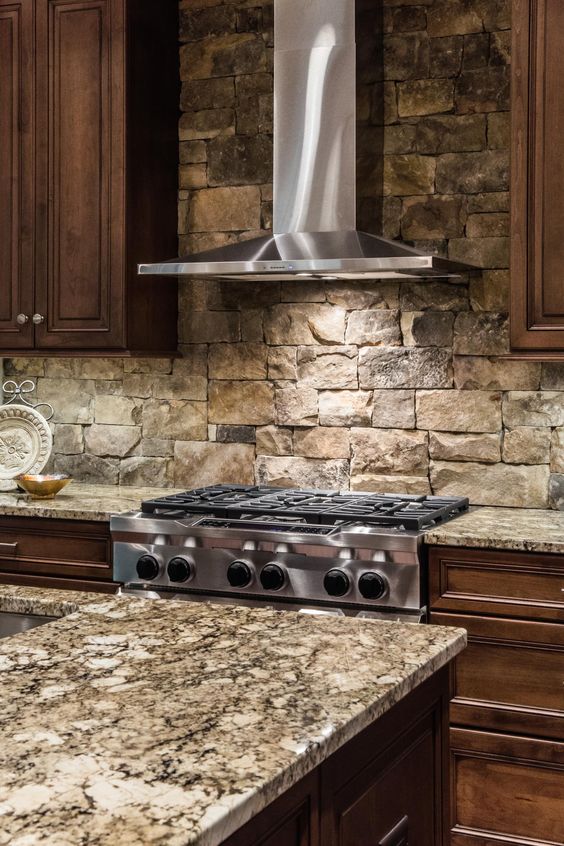
Durability is another significant advantage of stone backsplashes. Stones like granite and marble are known for their hardness and resistance to heat, making them ideal for kitchen environments. They can withstand the rigors of cooking, including exposure to high temperatures, without losing their charm. Additionally, with proper sealing, stone backsplashes are resistant to stains and water damage, ensuring they maintain their beauty for years to come.
The variety of stones available allows for customization and personalization of the kitchen space. Each type of stone has its own set of properties, colors, and textures, enabling homeowners to choose a backsplash that complements their existing decor. For instance, limestone and travertine offer a more subdued, earthy palette, while granite and marble can provide striking visual contrasts with their bold patterns and colors.

Installation of stone backsplashes, while requiring a certain level of expertise, can be a rewarding process. Professional installation ensures that the stones are properly sealed and adhered to, providing a durable and long-lasting finish. For the DIY enthusiast, there are numerous resources and tutorials available to guide the process. The key is to ensure that the stones are cut to fit and sealed properly to prevent moisture ingress.
Maintenance of stone backsplashes is relatively straightforward, especially when compared to other materials. Regular cleaning with mild soap and water, along with periodic resealing, is typically all that is needed to keep the stone looking its best. This low-maintenance aspect, combined with its durability and aesthetic appeal, makes rustic stone backsplashes an excellent choice for any kitchen renovation project.

Types of Stone for Rustic Backsplashes
When considering a rustic stone backsplash, it’s essential to understand the different types of stone available and their unique characteristics. Each type of stone brings its own aesthetic and functional benefits, making it crucial to choose the right one for your kitchen.
Granite is one of the most popular choices for kitchen backsplashes. Known for its durability and resistance to heat and scratches, granite is an ideal material for areas exposed to cooking activities. Granite backsplashes come in a wide range of colors and patterns, from subtle earth tones to bold, dramatic swirls, allowing for versatile design options.
Marble is another elegant option, prized for its luxurious appearance and smooth texture. While it is slightly softer than granite and more prone to staining, with proper care and maintenance, marble can serve as a stunning focal point in a kitchen. Its veining patterns and color variations add a touch of sophistication and timeless beauty.

Slate offers a more rustic and rugged look, with its natural cleft surface and deep, rich colors. Slate is highly resistant to heat and moisture, making it a practical choice for kitchen backsplashes. Its unique texture and color palette, ranging from dark grays and blacks to vibrant greens and purples, can create a striking visual impact.
Limestone and travertine are softer stones that provide a more understated and earthy aesthetic. These stones typically come in neutral shades of beige, cream, and gray, offering a warm and inviting look. While they require more maintenance to prevent staining and etching, their natural beauty and soft texture can enhance the rustic charm of any kitchen.
Quartzite is a natural stone that combines the best qualities of granite and marble. It is incredibly durable, resistant to heat and scratches, and comes in a variety of colors and patterns. Quartzite’s hardness and durability make it an excellent choice for kitchen backsplashes, while its unique appearance adds a touch of elegance.
Soapstone is a softer stone known for its smooth, matte finish and natural ability to darken over time, developing a rich patina. It is highly resistant to heat and staining, making it a practical choice for backsplashes. Soapstone’s unique feel and appearance can add a distinctive, old-world charm to a rustic kitchen.
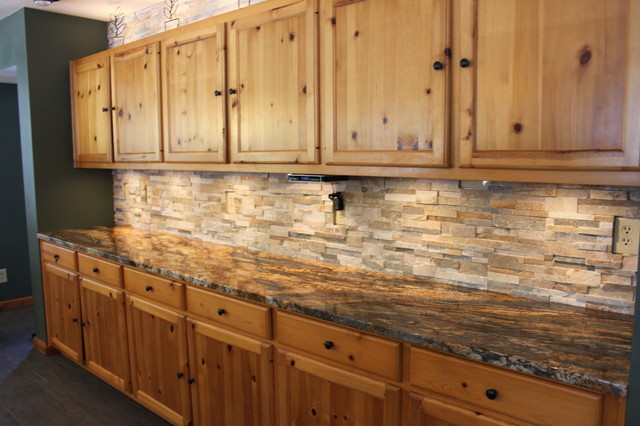
Design Considerations for Rustic Stone Backsplashes
Choosing the right design for a rustic stone backsplash involves considering several factors, including the overall style of the kitchen, the type of stone, and the color scheme. These elements need to work together harmoniously to create a cohesive and aesthetically pleasing look.
One key consideration is the color palette. Stone backsplashes come in a wide range of colors, from neutral tones like beige and gray to more vibrant hues like greens and reds. It’s essential to choose a color that complements the cabinetry, countertops, and flooring. For instance, a light-colored stone backsplash can brighten up a kitchen with dark cabinets, creating a balanced and inviting space.
The texture of the stone is another important factor. Rustic stone backsplashes can have various textures, from the smooth, polished finish of marble to the rough, natural cleft surface of slate. The texture can add depth and interest to the kitchen design. For a more traditional rustic look, stones with a natural, unpolished finish are ideal. They bring a sense of authenticity and raw beauty to the space.
Pattern and layout also play a crucial role in the overall design. Stones can be arranged in various patterns, such as subway, herringbone, or mosaic. The choice of pattern can influence the visual impact of the backsplash. For example, a herringbone pattern can add a dynamic and sophisticated touch, while a simple subway pattern can create a clean and classic look.

Grout color and thickness are additional elements that can affect the final appearance of the backsplash. Choosing a grout color that contrasts with the stone can highlight the individual pieces and create a more defined look. Alternatively, a grout color that blends with the stone can create a seamless and unified appearance. The thickness of the grout lines can also impact the design, with wider lines providing a more rustic and traditional look, and thinner lines offering a more modern and sleek finish.
Lighting is an often-overlooked aspect that can significantly enhance the beauty of a stone backsplash. Under-cabinet lighting can highlight the texture and color variations in the stone, creating a warm and inviting ambiance. It can also make the kitchen more functional by providing better visibility for cooking and food preparation.
Finally, consider the integration with other elements in the kitchen. The stone backsplash should complement the countertops, cabinets, and other fixtures. For instance, pairing a granite backsplash with a matching or contrasting granite countertop can create a cohesive and elegant look. Similarly, coordinating the stone with other natural materials, such as wood or metal, can enhance the rustic charm of the kitchen.
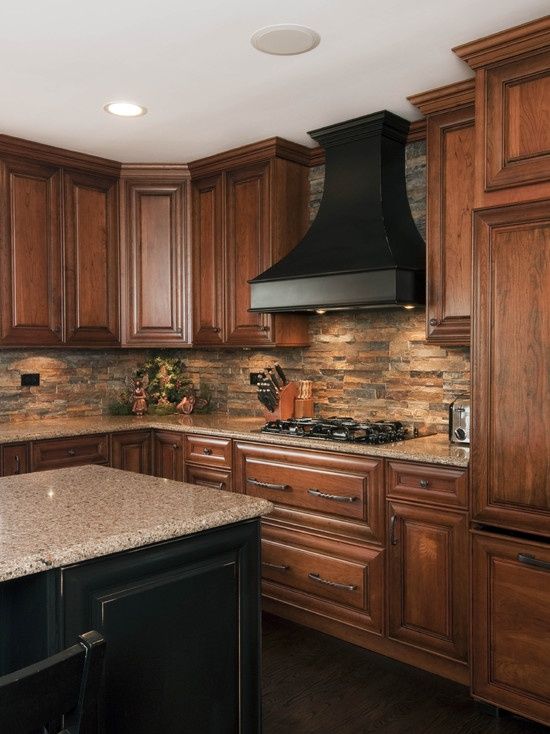
Installation Process
Installing a rustic stone backsplash can be a complex process that requires careful planning and execution. Whether you choose to hire a professional or tackle the project yourself, understanding the steps involved can help ensure a successful outcome.
Preparation is the first step in the installation process. This involves measuring the area to determine the amount of stone needed and preparing the wall surface. The wall should be clean, dry, and smooth. Any old backsplash material, paint, or wallpaper should be removed. If the wall is uneven, it may need to be sanded or patched to create a suitable surface for the stone.
Selecting and cutting the stone is the next step. Depending on the type of stone and the desired pattern, the stones may need to be cut to fit the space. This can be done using a wet saw or a tile cutter. It’s essential to measure and cut the stones accurately to ensure a precise fit. For intricate patterns, consider making a template to guide the cutting process.
Dry fitting the stones before applying adhesive is a crucial step. Lay out the stones on a flat surface to see how they fit together and make any necessary adjustments. This can help prevent mistakes and ensure that the pattern looks as intended. It’s also a good time to decide on the placement of any special pieces, such as decorative tiles or accent stones.
Applying the adhesive is the next step. A high-quality stone adhesive or thin-set mortar should be used to ensure a strong bond. The adhesive is applied to the wall using a notched trowel, and the stones are pressed into place. It’s essential to work in small sections to prevent the adhesive from drying out before the stones are set. Use spacers to maintain consistent grout lines and ensure the stones are aligned correctly.
Grouting and sealing are the final steps in the installation process. Once the adhesive has cured, grout is applied to fill the gaps between the stones. The grout should be spread evenly using a grout float, and any excess should be wiped away with a damp sponge. After the grout has set, the entire backsplash should be sealed to protect the stone and grout from moisture and stains. Sealing is particularly important for porous stones like marble and limestone.
Finishing touches include cleaning the stones and sealing any remaining gaps. Once the grout and sealer are fully cured, the backsplash should be cleaned with a mild soap and water solution to remove any residue. Any remaining gaps or imperfections can be filled with caulk or additional grout. The result is a beautiful, durable, and functional rustic stone backsplash that enhances the kitchen’s aesthetic.
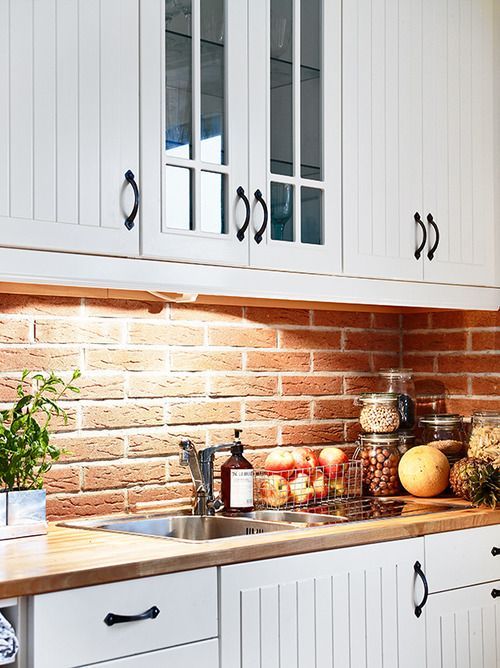
Maintenance and Care
Maintaining a rustic stone kitchen backsplash involves regular cleaning and periodic sealing to preserve its beauty and durability. Understanding the specific needs of the stone type used in your backsplash is crucial for effective care.
Regular cleaning is essential to keep the stone looking its best. Use a mild soap and water solution to clean the backsplash regularly. Avoid using harsh chemicals or abrasive cleaners, as these can damage the stone and its sealant. A soft cloth or sponge is usually sufficient for wiping down the surface. For tougher stains, a mixture of baking soda and water can be used as a gentle scrubbing paste.
Sealing the stone is a critical step in maintaining its integrity and appearance. Most natural stones are porous and can absorb moisture and stains if not properly sealed. The frequency of sealing depends on the type of stone and its usage. For high-use areas like kitchen backsplashes, sealing every six months to a year is recommended. To test if your stone needs sealing, sprinkle a few drops of water on the surface. If the water is absorbed, it’s time to reseal.
Addressing stains and spills promptly can prevent long-term damage. Wipe up any spills immediately, especially those from acidic substances like vinegar, lemon juice, or wine, as these can etch the stone. For oil-based stains, use a poultice made from baking soda and water to draw out the stain. Apply the paste, cover it with plastic wrap, and let it sit for 24 hours before wiping it away.
Avoiding scratches and etching is another aspect of stone maintenance. While stones like granite and quartzite are highly resistant to scratches, softer stones like marble and limestone are more susceptible. Use cutting boards and trivets to protect the stone surface from sharp objects and hot pots. Be mindful of heavy cookware and utensils that can chip or scratch the stone.
Periodic inspection can help identify and address any issues before they become significant problems. Check the grout lines and sealant regularly for signs of wear or damage. If the grout is cracking or the sealant is peeling, it’s time to repair or replace these components. Keeping the grout and sealant in good condition helps maintain the overall integrity of the backsplash.
Professional maintenance might be necessary for certain issues that are difficult to address on your own. For example, deep stains, extensive etching, or significant damage may require professional cleaning, repair, or restoration. Professional services can help bring back the original beauty of the stone and extend its lifespan.
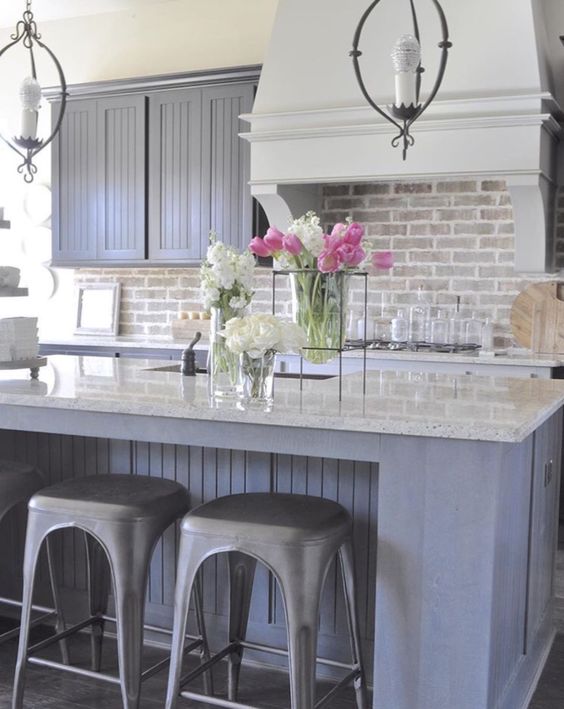
Common Mistakes to Avoid with Stone Backsplashes
When installing and maintaining a rustic stone kitchen backsplash, several common mistakes can impact its appearance and longevity. Being aware of these pitfalls can help ensure a successful and lasting installation.
Choosing the wrong type of stone for your kitchen’s needs can lead to maintenance headaches and durability issues. For instance, selecting a porous stone like marble in a high-use area without proper sealing can result in staining and etching. Understanding the properties and maintenance requirements of each stone type is crucial.
Improper sealing or neglecting to seal the stone can leave it vulnerable to stains, moisture, and damage. It’s essential to follow the manufacturer’s recommendations for sealing and resealing your specific type of stone. Regularly test the sealant’s effectiveness and reapply as needed to protect the stone.
Incorrect installation techniques can compromise the backsplash’s durability and appearance. Failing to properly prepare the wall surface, use the correct adhesive, or apply the grout correctly can result in loose stones, uneven grout lines, and a lack of structural integrity. Hiring a professional or thoroughly researching installation techniques can prevent these issues.
Using harsh cleaning products can damage the stone and its sealant. Avoid acidic or abrasive cleaners, which can etch or scratch the stone surface. Stick to pH-neutral, stone-safe cleaners to maintain the stone’s appearance and protective seal.
Ignoring small issues can lead to larger problems over time. Cracked grout, loose stones, or minor stains should be addressed promptly to prevent further damage. Regular inspection and maintenance can catch these issues early and keep the backsplash in good condition.
Overlooking the importance of professional help for certain tasks can result in subpar outcomes. While DIY installation and maintenance are feasible, some issues require professional expertise. Deep cleaning, significant repairs, and complex installations are best handled by experienced professionals to ensure the stone’s longevity and beauty.

What types of stones are best for a rustic kitchen backsplash?
The best types of stone for a rustic kitchen backsplash include granite, marble, slate, limestone, travertine, quartzite, and soapstone. Each of these stones offers unique characteristics that can enhance the rustic charm of a kitchen. Granite is highly durable and resistant to heat and scratches, making it ideal for busy kitchens. Marble, while more prone to staining, offers a luxurious and elegant look. Slate provides a rugged and natural appearance, while limestone and travertine offer a softer, more earthy aesthetic. Quartzite combines durability with striking patterns, and soapstone adds a unique, matte finish that develops a rich patina over time.
How do I maintain and clean a stone backsplash?
Maintaining and cleaning a stone backsplash involves regular cleaning with a mild soap and water solution and avoiding harsh chemicals and abrasive cleaners. Periodic sealing is essential to protect the stone from moisture and stains. Spills should be wiped up immediately, especially acidic substances that can etch the stone. For tougher stains, a paste made from baking soda and water can be used. It’s also important to use cutting boards and trivets to prevent scratches and damage from sharp objects and hot pots. Regular inspection of the grout and sealant can help catch and address any issues early.
Can I install a stone backsplash myself, or should I hire a professional?
While it is possible to install a stone backsplash yourself, it requires careful planning, precise cutting, and proper application of adhesive and grout. For those with experience in DIY projects and the necessary tools, it can be a rewarding project. However, for a flawless and durable installation, hiring a professional is often recommended. Professionals have the expertise and equipment to ensure the stones are properly sealed, adhered, and aligned, resulting in a long-lasting and beautiful backsplash.
How often should I reseal my stone backsplash?
The frequency of resealing a stone backsplash depends on the type of stone and its usage. Generally, it’s recommended to reseal high-use areas like kitchen backsplashes every six months to a year. To determine if resealing is needed, perform a water test by sprinkling a few drops of water on the surface. If the water is absorbed and darkens the stone, it’s time to reseal. Regular sealing helps protect the stone from stains, moisture, and damage, maintaining its appearance and durability.
What are the advantages of choosing a stone backsplash over other materials?
Stone backsplashes offer several advantages over other materials, including their natural beauty, durability, and timeless appeal. Each type of stone has unique characteristics, such as color variations, veining, and texture, that add depth and interest to the kitchen design. Stones like granite and quartzite are highly resistant to heat and scratches, making them ideal for kitchen environments. With proper sealing, stone backsplashes are also resistant to stains and water damage. Additionally, the rustic charm and authenticity of natural stone cannot be replicated by synthetic materials, making it a popular choice for those seeking a warm and inviting kitchen space.
What should I consider when choosing a stone for my kitchen backsplash?
When choosing a stone for your kitchen backsplash, consider factors such as the overall style of your kitchen, the stone’s durability, maintenance requirements, and color scheme. The stone should complement the cabinetry, countertops, and flooring to create a cohesive look. The texture of the stone can add depth and interest, with options ranging from smooth, polished finishes to rough, natural cleft surfaces. The pattern and layout of the stones, as well as the color and thickness of the grout, can also influence the final appearance. Additionally, consider the practical aspects of the stone, such as its resistance to heat, scratches, and stains, and whether it requires regular sealing and maintenance.

Related Posts:
- Kitchen Tile Backsplash Ideas With Oak Cabinets
- Kitchen Counter Backsplash Pictures
- Small Glass Tiles Kitchen Backsplash
- How To Install Mosaic Tile Backsplash In Kitchen
- Herringbone Subway Tile Kitchen Backsplash
- Kitchen Backsplash White Cabinets Brown Countertop
- Clear Glass Tiles For Kitchen Backsplashes
- Kitchen Backsplash Bullnose Edges
- Subway Tile Kitchen Backsplash Cost
- White Modern Kitchen Backsplash